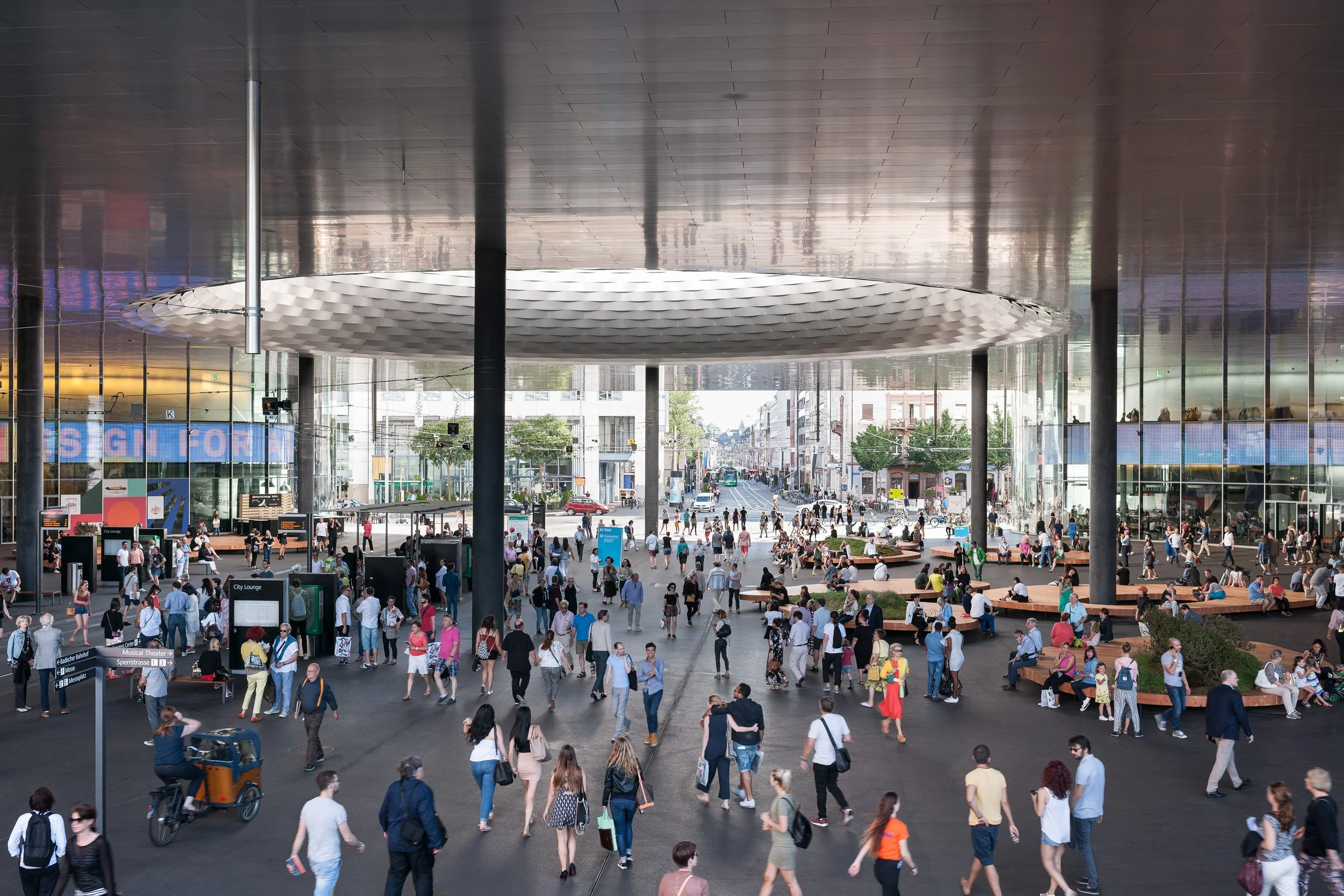Price, Prestige and Power: Contemporary African Art in the Global Market
For decades, Art Basel has served as the global barometer of art-market confidence—a place where prices are discovered, careers are accelerated, and taste is negotiated among the world’s most influential collectors, advisors and institutions. Against this backdrop, the emergence of Africa Basel during Basel week marks a decisive moment in the repositioning of contemporary African art. It signals not just participation in the global system, but structural inclusion—shifting from the periphery into the system’s central artery.
Messeplatz during Art Basel 2018. Photo by Andreas Zimmermann Fotografie
Art Basel as the Barometer
The art-fair model cultivated by Art Basel works as a clearing mechanism: galleries bring works, collectors and institutions attend, prices are tested—and reputations formed. The Art Basel & UBS Art Market Report 2025 confirms this pattern. According to the report, the global art-market value fell by approximately 12% in 2024 to an estimated USD 57.5 billion, yet the number of transactions rose by around 3% to approximately 40.5 million.
Artsy’s summary further notes that smaller dealers—those with turnover under USD 250,000—reported growth of about 17% in 2024, signalling that volume and breadth are strengthening even as mega-lot value softens.
Africa Basel:
Platform and Catalyst
Staged in June 2025 during Basel week, Africa Basel is more than “another fair”. It operates as a strategic node: by aligning with the influx of international collectors, museum directors and advisors already in town, the fair helps reduce typical entry-costs for galleries from Africa and the diaspora—fewer flights, fewer competing events and greater visibility within a global context.
By offering both commercial booths and curatorial programming (guided tours and “Curated Dialogues”), Africa Basel amplifies not just transactions but narrative infrastructure—signals of quality, novelty and institutional interest. In doing so, the fair contributes to primary-market momentum and the generation of comparables required for secondary-market development.
In short: Africa Basel does not simply plug into the global ecosystem—it helps reshape it by repositioning the geographic and cultural axis of “market visibility”.
Contemporary African Art:
Market Positions and Price Dynamics
Within this evolving structure, contemporary African art is following a distinct, though interconnected, trajectory. While data specific to the African segment remain less comprehensive than for the global market, meaningful signals are visible. For instance, research by ArtTactic shows that global auction sales for modern and contemporary African art declined by 8.4% in 2023—less steep than many older-market sectors. Meanwhile, Artnet reports total fine-art auction sales on the African continent at just under USD 17 million in 2024.
Given this context, the following illustrative price bands apply more realistically to the contemporary African art market:
Market Momentum: Global vs African Art Segments
Price Points in the current African Art Market
Prizes:
Institutional Signals and Market Leverage
Signalling is fundamental in the art market: winning a prize, obtaining a major residency, or being collected by a museum lowers the “risk premium” for a buyer. The CAP Prize – Contemporary African Photography Prize exemplifies this in the African photography context: since 2012, it has celebrated emerging photographers whose work engages African narratives, offering exhibitions and global network access.
Beyond the CAP Prize, there are platforms such as the Henrike Grohs Art Award, the Norval Sovereign African Art Prize, the Absa L’Atelier (including its Sasol New Signatures stream) and the Standard Bank Young Artist Award, and others. These programmes serve as key catalysts for career development, gallery signings and fair placements—all of which underpin price step-ups.
When an artist transitions from prize recognition to gallery representation and institutional acquisition, the price ladder begins to climb. The presence of such signals in the African context is growing, and fairs like Africa Basel help activate those signals in a global space.
Outlook:
Depth Over Hype
As the global art market enters a period of recalibration, the opportunity for the contemporary African art segment is structural, rather than speculative. The contraction at the top end of the market creates space for growth below; the emergence of new buyers and geographies expands depth; enhanced digital access simplifies discovery; and fairs such as Africa Basel provide refined infrastructure for visibility and comparables.
However, sustainable growth will depend on artists building production capacity, galleries maintaining credible pricing discipline and collectors moving from impulse to sustained engagement. For the African segment this means curatorial depth, institutional placements and transparent secondary-market practices.
In short—it is not a matter of catching the next wave. Contemporary African art is no longer arriving at the centre. It is shaping where the centre lies.

